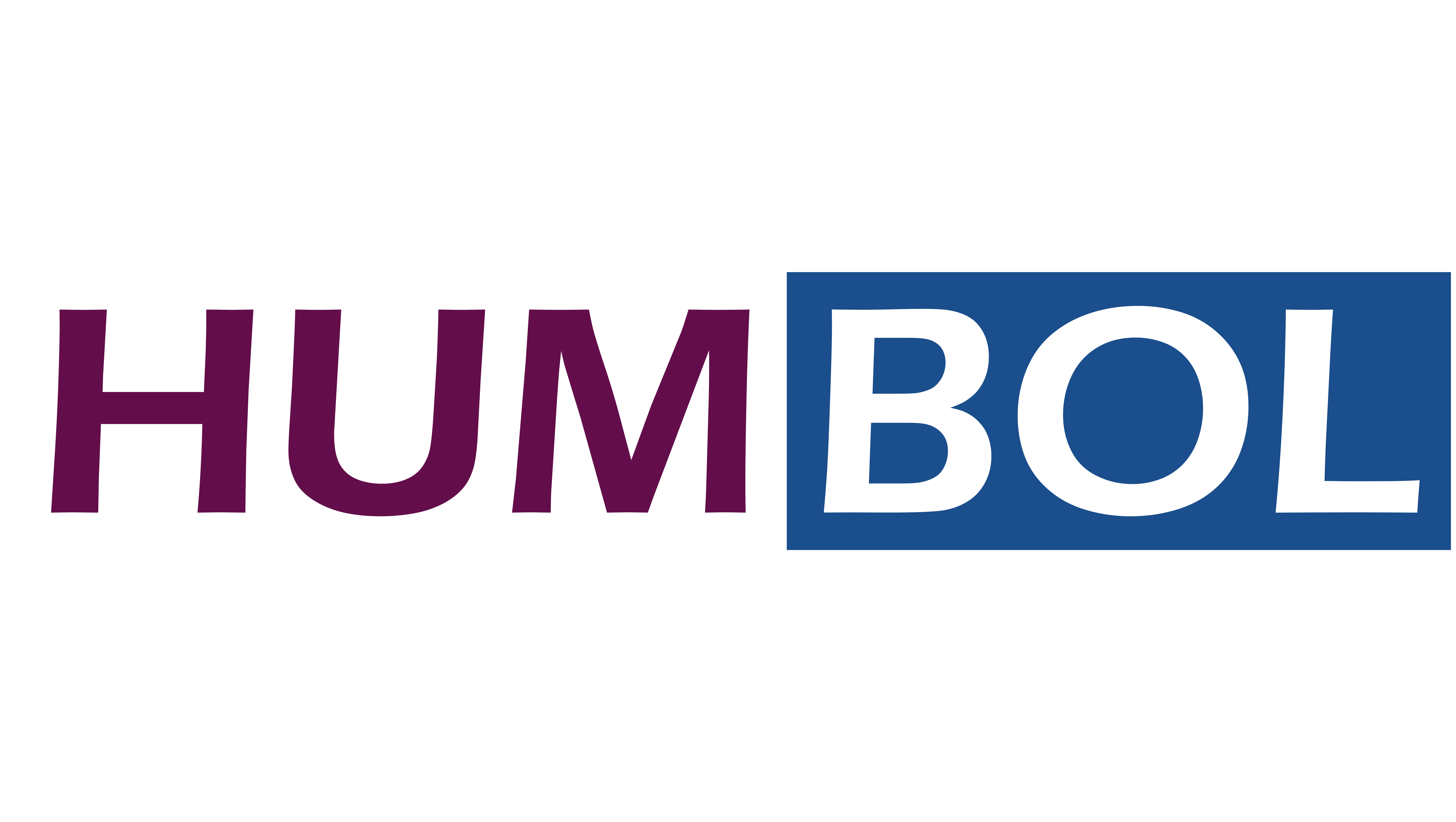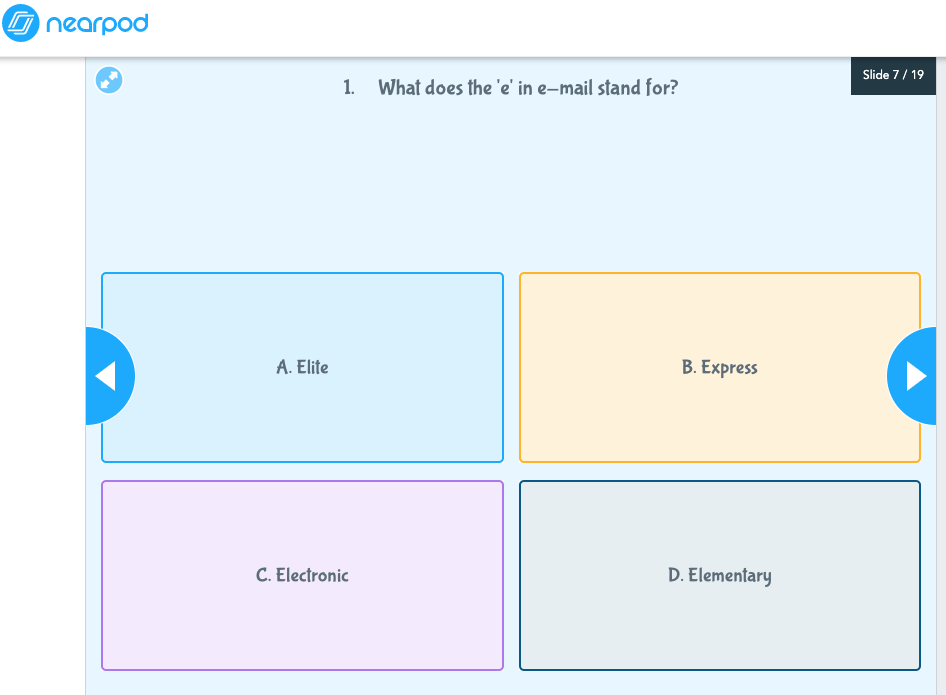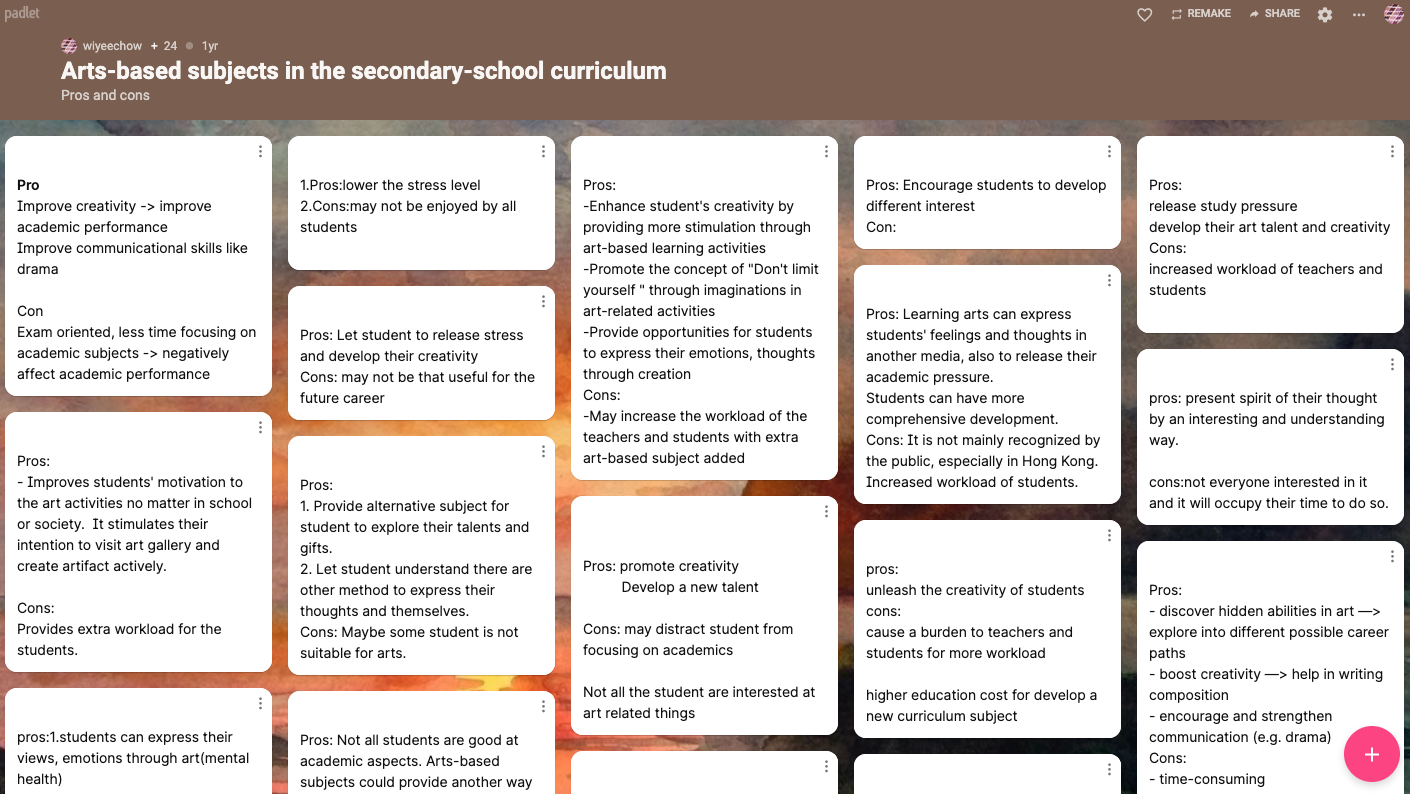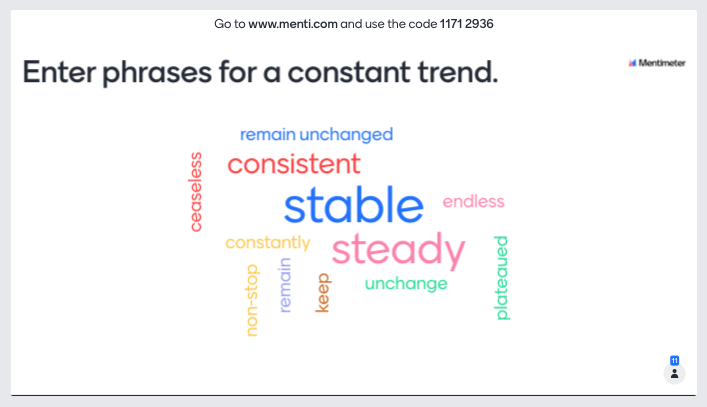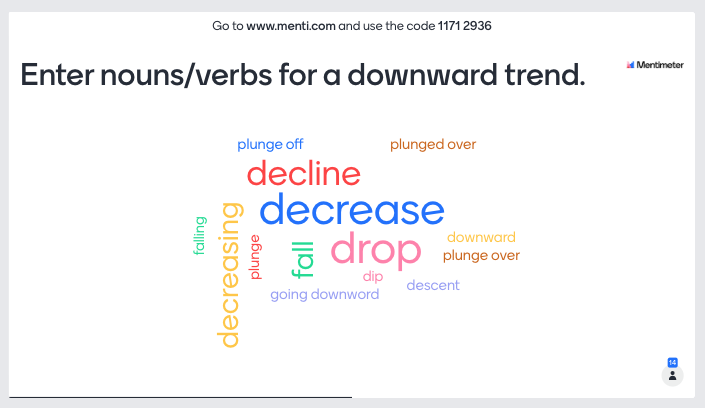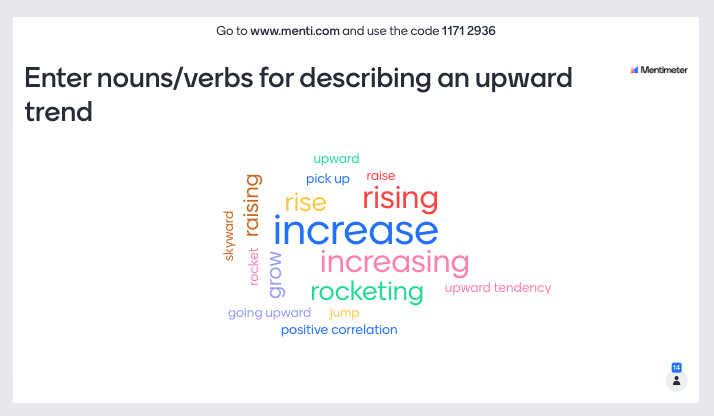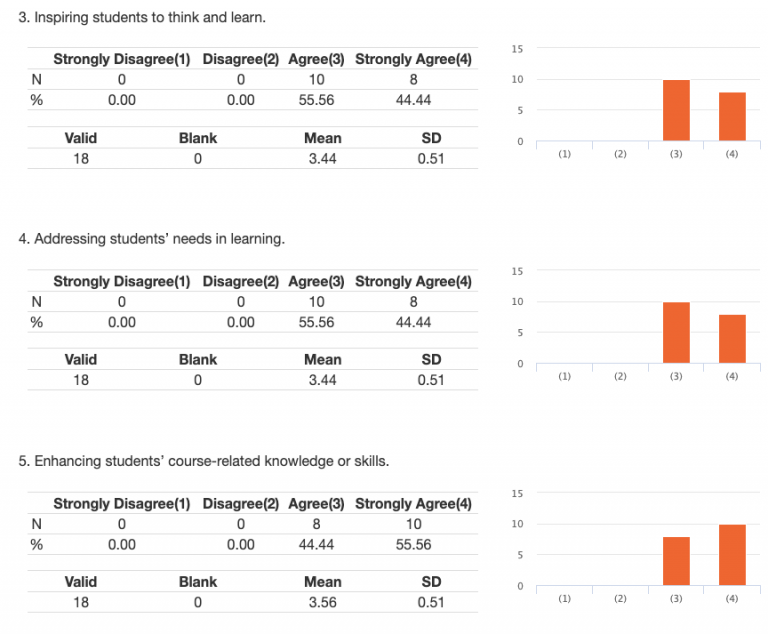
Ms Chow Wing Yee
CLE
Motivating Students in the Language Classroom
through e-Learning
It is believed that students learn best when they are motivated. This is especially true for English language learning in e-classrooms at the University. Therefore, elevating students’ learning motivation has been one of the most prioritized goals for language lecturers. In this poster, I am going to share the teaching techniques and e-learning strategies adopted in the English classroom in a self-reflective approach. It is hoped that the experience can highlight the importance of focusing on learners’ needs with the help of various e-learning tools.
Learning Motivation
Self-reflective Approach
e-Learning Tools
Course Context: University Speaking
Teaching Mode: Online Teaching
Referred Framework: PICRAT
Core e-Resources: PearDeck, Nearpod, Padlet, Mentimeter
This course builds on the development of students’ academic literacy introduced in another writing course. Through integrated language activities, students learn to employ topical and vocabulary input to develop logical standpoint in scripted and spontaneous academic contexts such as speeches, class presentations and discussions. Pronunciation, intonation, language usage and grammar will be revisited to enhance emphasis, tone and intended meanings in scripted speeches or presentations in formal contexts.
Brainstorming Vocabulary Items with Mentimeter ![]()
Research Results: Survey and Interviews
Our students are from diverse backgrounds and disciplines, so they have different language proficiency. Some may have low motivation and confidence in using the language. In this self-reflective study, it is hoped that students’ motivation can be enhanced through the adoption of various e-learning tools.
Oxford (1997, p.444) suggested that learners and teachers can engage and interact in a meaningful way when “the three communicative strands: cooperative learning, collaborative learning, and interaction” appear in a language classroom. Dornyei and Otto (1998, p.45) mentioned that students’ learning motivation can be maintained for a longer period when different learning tasks are practiced in sustained learning contexts. It can be seen that learners’ motivation can be elevated when the tasks are appropriately designed and various e-learning tools can be used in order to achieve such a purpose.
My teaching strategies in the beginning:
- In-class drilling exercise for sentence patterns and verb tenses
- Take-home writing task, e.g. Do you think art-based subjects should be made compulsory for university students?
(students’ response: low submission rate)
According to PICRAT, we have to consider an essential question: How can students learn better with technology? Are they passive, interactive or creative? Another question includes: How can technology impact students’ learning experience? Does it replace, amplify or transform learning? Taking the above into consideration, different e-learning platforms and tools have been implemented:
- PearDeck: text questions and MC questions were set so as to gather immediate response from students.
- Nearpod: video sharing, competitive game and collaborative learning activities could be done in order to enhance communication among students and the teacher.
- Padlet: students could brainstorm ideas before a task or share viewpoints as consolidation of their work.
- Mentimeter: students could gather ideas and learn from one another. This can also act as a platform for their self-reflection.
(students’ performance: develop self autonomy and motivation, better writing quality in assessment, higher response rate in voluntary exercises)
“There’s not much need to change. Just keep it up!”
“Cherry is a very patient and cheerful teacher! The practices and in-class activities surely let students get the complete and great picture of learning content.”
“Thank you so much for the tips that I can use it in ITELS speaking.”
“The course provides more topics and skills to upgrade my speaking skills. While we are using pear deck to improve interactions between students and teachers efficiently, we can boost our motives to learn.”
Conclusions
It can be found that some of the tools used can amplify students’ learning experiences. For example, students are encouraged to create Google survey to record data for their writing tasks. They have also learnt to navigate on PearDeck in individual and group activities. Besides that, they could watch a video lesson before class in order to prepare for the target items to be taught. There is also evidence for transforming their learning since they are asked to present their work on Padlet as a group. This can make learning come to live instead of students being passive learners. While this is a good way for them to consolidate what they have learnt, they can also learn from one another and comment on other’s work.
As a teacher, it is important to adopt a variety of teaching strategies to increase students’ learning motivation. Understanding learners’ needs and the nature of tasks are essential in cultivating student’s motivation as well.
As a course coordinator, making pedagogical judgment on whether certain tasks should be used in class or put online is important for students’ learning motivation. While maintaining communication with colleagues reinforces learning outcome among students, collecting feedback from students can also make the course student-centered, hence promoting students’ learning motivation.
Dornyei, Z. & Otto, I. (1998). Motivation in action: A process model of L2 motivation. Working Papers in Applied Linguistics, 4, 43-69.
Oxford, R. L. (1997). Cooperative learning, collaborative learning, and interaction: three communicative strands in the language classroom. The Modern Language Journal, 81, 443-456.
